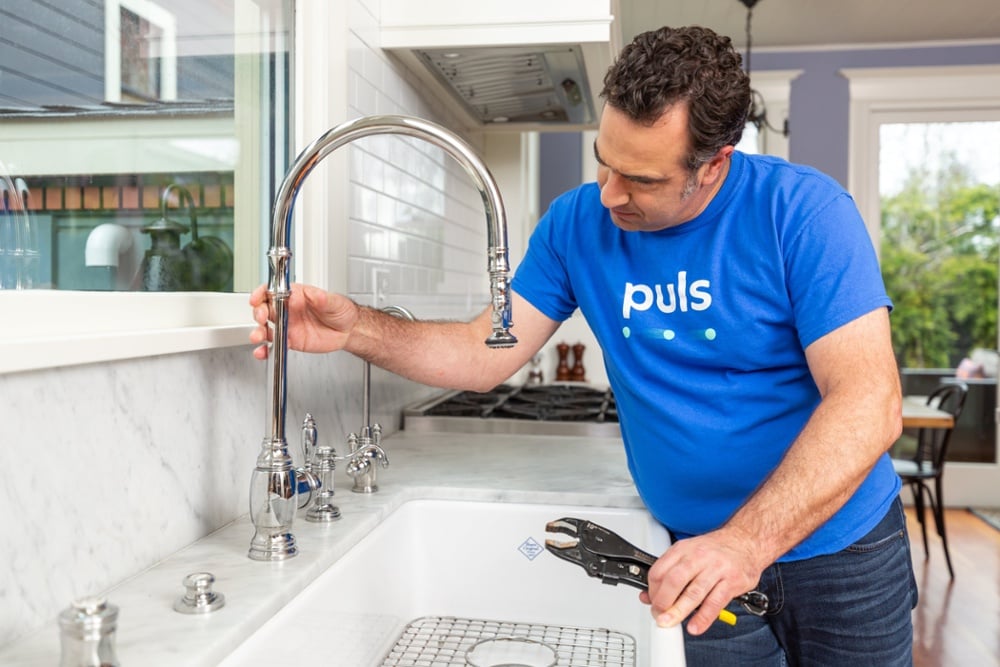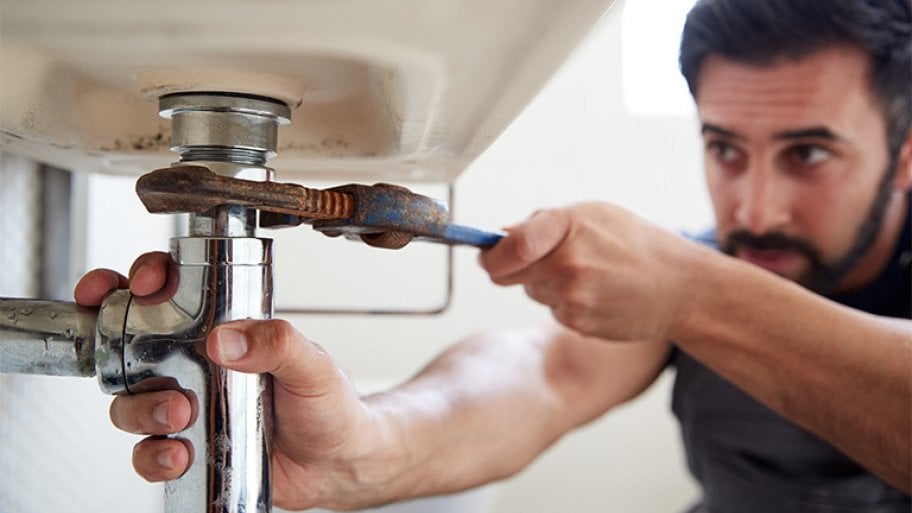Put an End to Annoying Plumbing Noises in Your House
Put an End to Annoying Plumbing Noises in Your House
Blog Article
What're your thoughts about Why Your Water Pipes Are Noisy and How To Shut Them Up?

To detect loud plumbing, it is very important to identify first whether the undesirable noises occur on the system's inlet side-in various other words, when water is turned on-or on the drainpipe side. Noises on the inlet side have differed causes: too much water pressure, worn valve and faucet components, incorrectly linked pumps or various other appliances, incorrectly positioned pipeline fasteners, and also plumbing runs containing too many limited bends or various other limitations. Noises on the drainpipe side normally come from poor area or, just like some inlet side noise, a format including tight bends.
Hissing
Hissing sound that occurs when a tap is opened slightly usually signals excessive water stress. Consult your local public utility if you think this trouble; it will have the ability to inform you the water pressure in your location and also can mount a pressurereducing shutoff on the incoming water pipe if required.
Other Inlet Side Noises
Squeaking, squealing, damaging, breaking, and tapping typically are triggered by the growth or tightening of pipelines, typically copper ones supplying warm water. The audios happen as the pipes slide versus loosened fasteners or strike neighboring house framework. You can frequently identify the place of the problem if the pipes are exposed; simply adhere to the sound when the pipelines are making noise. Probably you will uncover a loosened pipeline hanger or a location where pipelines exist so near flooring joists or other mounting pieces that they clatter versus them. Affixing foam pipeline insulation around the pipelines at the point of get in touch with ought to correct the problem. Be sure bands and also wall mounts are safe and supply sufficient assistance. Where possible, pipeline fasteners should be affixed to substantial architectural components such as foundation walls rather than to mounting; doing so minimizes the transmission of vibrations from plumbing to surfaces that can intensify and also transfer them. If attaching fasteners to framing is inevitable, cover pipelines with insulation or other durable material where they call fasteners, and also sandwich the ends of brand-new bolts in between rubber washing machines when mounting them.
Remedying plumbing runs that struggle with flow-restricting tight or many bends is a last hope that should be embarked on only after getting in touch with an experienced plumbing contractor. However, this circumstance is fairly common in older residences that might not have been constructed with interior plumbing or that have actually seen several remodels, specifically by novices.
Babbling or Screeching
Intense chattering or screeching that happens when a shutoff or faucet is switched on, which typically vanishes when the installation is opened completely, signals loose or faulty inner parts. The option is to replace the valve or tap with a brand-new one.
Pumps and devices such as cleaning machines and also dish washers can move motor noise to pipes if they are poorly attached. Connect such things to plumbing with plastic or rubber hoses-never inflexible pipe-to isolate them.
Drain Noise
On the drain side of plumbing, the principal goals are to get rid of surfaces that can be struck by dropping or hurrying water and to shield pipelines to include inescapable noises.
In new construction, bathtubs, shower stalls, bathrooms, and wallmounted sinks and containers ought to be set on or versus resistant underlayments to lower the transmission of noise with them. Water-saving commodes and also taps are much less loud than standard models; mount them instead of older kinds even if codes in your location still permit making use of older components.
Drainpipes that do not run vertically to the cellar or that branch right into horizontal pipeline runs supported at floor joists or other mounting existing particularly troublesome noise problems. Such pipes are huge sufficient to radiate substantial resonance; they also lug considerable quantities of water, which makes the scenario worse. In brand-new building, define cast-iron soil pipelines (the big pipelines that drain toilets) if you can afford them. Their massiveness consists of much of the noise made by water passing through them. Likewise, avoid directing drains in walls shown to bedrooms as well as spaces where people collect. Walls consisting of drainpipes ought to be soundproofed as was described previously, utilizing double panels of sound-insulating fiberboard as well as wallboard. Pipelines themselves can be covered with special fiberglass insulation made for the objective; such pipelines have a resistant plastic skin (often having lead). Results are not always sufficient.
Thudding
Thudding noise, typically accompanied by shuddering pipelines, when a tap or device valve is turned off is a condition called water hammer. The noise as well as resonance are caused by the resounding wave of stress in the water, which unexpectedly has no place to go. Sometimes opening a shutoff that discharges water swiftly right into a section of piping having a limitation, arm joint, or tee installation can produce the exact same problem.
Water hammer can generally be cured by installing fittings called air chambers or shock absorbers in the plumbing to which the issue shutoffs or taps are connected. These tools enable the shock wave created by the halted circulation of water to dissipate airborne they include, which (unlike water) is compressible.
Older plumbing systems might have short vertical areas of capped pipe behind wall surfaces on tap runs for the very same objective; these can at some point full of water, decreasing or destroying their performance. The cure is to drain pipes the water system entirely by turning off the major water valve and also opening all taps. After that open the primary supply shutoff and shut the taps one at a time, beginning with the tap nearest the valve as well as finishing with the one farthest away.
WHY IS MY PLUMBING MAKING SO MUCH NOISE?
This noise indeed sounds like someone is banging a hammer against your pipes! It happens when a faucet is opened, allowed to run for a bit, then quickly shut — causing the rushing water to slam against the shut-off valve.
To remedy this, you’ll need to check and refill your air chamber. Air chambers are filled with — you guessed it — air and help absorb the shock of moving water (that comes to a sudden stop). Over time, these chambers can fill with water, making them less effective.
You’ll want to turn off your home’s water supply, then open ALL faucets (from the bathroom sink to outdoor hose bib) to drain your pipes. Then, turn the water back on and hopefully the noise stops! If you’re still hearing the sound, give us a call to examine further.
Whistles
Whistling sounds can be frustrating, as sometimes the source isn’t easily identified. However, if you can pinpoint which faucet or valve that may be the cause, you’ll likely encounter a worn gasket or washer — an easy fix if you replace the worn parts!Whistling sounds from elsewhere can mean a number of things — from high water pressure to mineral deposits. Your best plan of attack here is to give our plumbing experts a call. We’ll be able to determine where the noise is coming from and what the cause may be, then recommend an effective fix!
Cracks or Ticks
Cracking or ticking typically comes from hot water going through cold, copper pipes. This causes the copper to expand resulting in a cracking or ticking sound. Once the pipes stop expanding, the noise should stop as well.
Pro tip: you may want to lower the temperature of your water heater to see if that helps lessen the sound, or wrapping the pipe in insulation can also help muffle the noise.
Bangs
Bangs typically come from water pressure that’s too high. To test for high water pressure, get a pressure gauge and attach it to your faucet. Water pressure should be no higher than 80 psi (pounds per square inch) and also no lower than 40 psi. If you find a number greater than 80 psi, then you’ve found your problem!
Next step is to give us a call in order to install a pressure regulator. Trust us, you don’t want to wait to resolve this issue. Not only is the sound annoying, but high water pressure can be destructive to your home — including damaging certain appliances, like your washer and dishwasher.
Dripping
You might be accustom to the slow quiet drip your kitchen faucet makes. You might have even tuned out your bathroom sink dripping and drabbing all day long — but it’s time to find its cause.
A slow drip could signify a variety of easy to fix issues, such as a worn out O ring, or loose part. And by ignoring the drip, you could be wasting up to 2,000 gallons of water a year! So start conserving water — get it looked at ASAP.
https://www.pwessig.com/blog/2018/december/why-is-my-plumbing-making-so-much-noise-/

As a devoted person who reads on Why Your Water Pipes Are Noisy and How To Shut Them Up, I thought sharing that section was a great idea. Don't hesitate to take the time to promote this post if you liked it. Many thanks for going through it.
Need expertise? Dial. Report this page